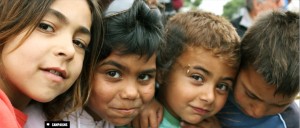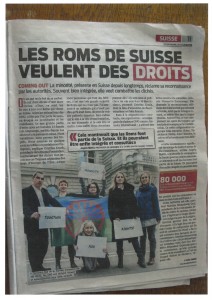The Rroma wedding in Zurich filled the Swis German papers yesterday and probably will continue to do so for a while. 600 Rroma, nearly a 100 caravans, all for a wedding. A farmer rented them the field.
- «Wir sind alle froh, wenn wir das gut überstanden haben». In: TAges Anzeiger. 23.07.2015. http://www.tagesanzeiger.ch/zuerich/stadt/wir-sind-alle-froh-wenn-wir-das-gut-ueberstanden-haben/story/18061158
- «Wir sind alle froh, wenn wir das gut überstanden haben». In: Basler Zeitung. 22.07.2015. http://bazonline.ch/schweiz/standard/wir-sind-alle-froh-wenn-wir-das-gut-ueberstanden-haben/story/30905039



